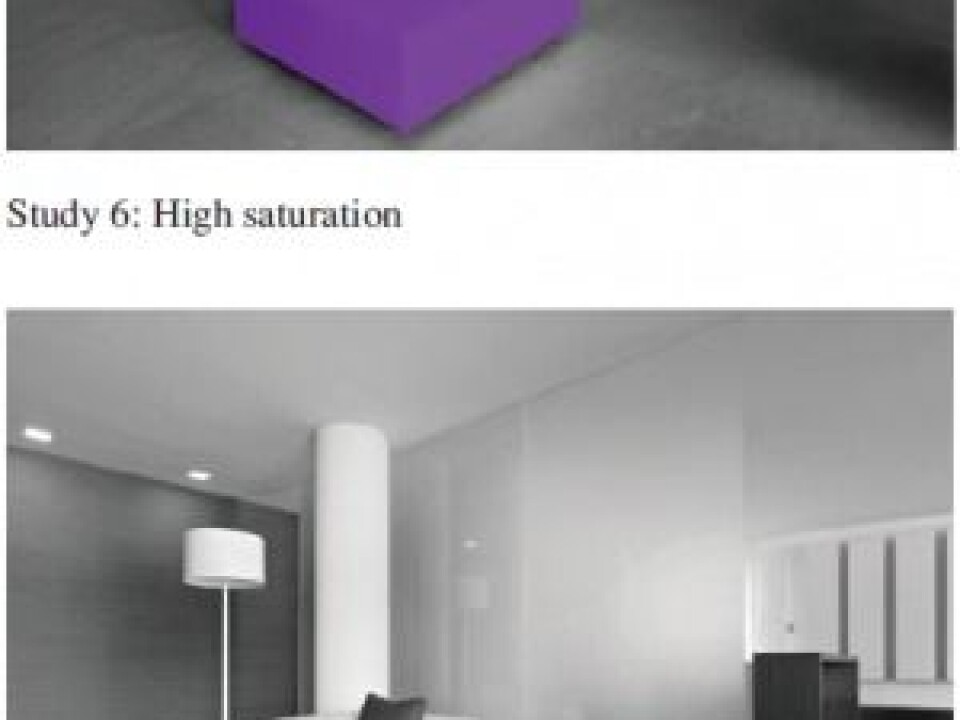
Consumers are fooled by a product’s colour
An optical illusion leads us to think that products that are more brightly coloured are bigger, or have more space than the same products with more muted colours. Researchers tested this idea with coloured coffee cups, suitcases and furniture in shades of red, orange and purple.
Retailers are always looking for ways to convince consumers to buy more. A new study shows just how easy it can be to use colour to affect our purchasing choices.
A little extra colouring, for example, makes us think that an orange suitcase with a stronger colour is more spacious than one that is light orange, even though the suitcases are the same size.
The study has been published in the Journal of Consumers Research.
"The strength of a colour is an effective marketing tool,” says one of the researchers behind the study. He also points out that consumers who want products that take up less space prefer lighter colours because they think the products are smaller.
A painter turned researcher

The study was conducted by Henrik Hagtvedt and his colleague Adam Brasel at Boston College in the United States.
Hagtvedt is Norwegian and studied art history at the University of Oslo. Now he studies the use of colours in marketing.
"Saturated colours raise awareness," he said.
Hagtvedt and his colleague have been able to document that deeper, more saturated colours arouse our interest. They used eye-tracking measurements, where they recorded how fast and how long people's eyes focus on objects of different colours.
"Colours affect us more than most people realize," he said.
Coffee cups, suitcases and computers
Using six experiments, Hagtvedt and his colleague tested how subjects perceived coffee cups, suitcases and PCs that were the same size but different hues.
Participants were asked to evaluate two objects of the same colour, but one of the objects had more colour saturation, meaning more pigment.
The first experiment confirmed Hagtvedt's hypothesis: The participants thought that a dark green box was larger than a lighter green box, even though they were actually the same size.
In another test, participants were asked to consider two PCs with different hues of red. The participants thought that the bright red PC was larger than the one with a lighter red colour. The brighter red colour also attracted more attention and engagement from participants.
A darker suitcase seemed bigger
In another experiment, Hagtvedt asked students at Boston College which of two carry-on suitcases they preferred. One was a deep orange, the other a lighter orange.
Participants were divided into two groups and were told to make their choice according to different criteria. One group was told to select the suitcase they thought was roomiest, while the other was told to choose the suitcase they thought would take up the least amount of space.
“The first group was supposed to get the most into the suitcase. Most of them chose the suitcase with the strongest colour,” Hagtvedt said.
The other group was told to consider that the suitcase had to be put in the overhead compartment on an airplane.
"Then most of them chose the suitcase that had the weakest colour," he said.
These results show that consumers think products have different volumes based on their colour saturation.
Put more candy in brown coffee cup than in beige
The next test involved asking participants to fill a paper coffee cup with as many jelly beans as they wanted.
"But they were only allowed to take one scoop," Hagtvedt said.
Some participants got a light brown paper cup to fill, while others got a more deeply coloured paper cup of the same hue. Participants who had the most strongly coloured cup took 27 per cent more jelly beans on average.
"This result was very funny. It shows that people who had the most strongly coloured cup actually believed it had more space," he said.
Furniture colour affects the feeling of space
Hagtvedt also wanted to see if the colour of furniture affects how big we think a room is. This could be particularly useful information when booking a hotel room.
He showed different pictures of the same room to the study participants. One picture shows the room furnished with a deep purple ottoman. In the second picture, the room was furnished in exactly the same way and with the same ottoman, but the ottoman was a lighter colour purple. The ottomans were exactly the same size.
Participants assumed that the height to the ceiling was lower when the ottoman was a deeper purple than when it was lighter, said Hagtvedt.
It is likely that furniture with more deeply saturated colours looks bigger, and thus the surroundings are perceived as relatively smaller, he explains.
Consumers should become more aware
Klemens Knöferle is an associate professor at the Department of Marketing at BI Norwegian Business School. He believes the study is a reminder to all of us to become more aware.
"We consumers are open to both visual and other sensory effects. I would definitely encourage consumers to understand how visuals can affect consumption and what they buy. This goes beyond the effect of colour saturation,” he points out.
Product packaging, the design of a store and adverts all affect consumer behaviour.
“We should be aware that we drink more from taller cartons and eat more from larger plates,” says Knöferle.
It is also important for manufacturers to be aware of how colour affects consumers' perception of the size of their products, Hagtvedt says.
“They should also keep in mind that consumers are different. A wide range of colours can meet different needs,” he says.
Consumers, on their part, might be more aware of how our eyes can deceive us.
-------------------------------------
Read the Norwegian version of this article at forskning.no






























